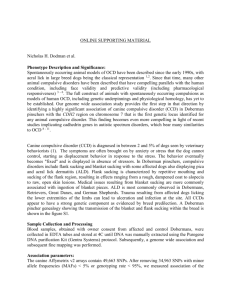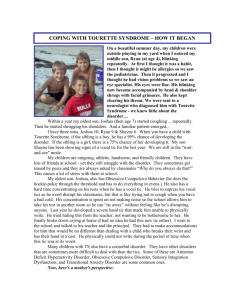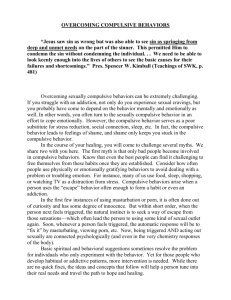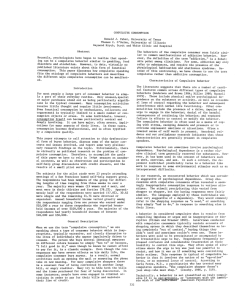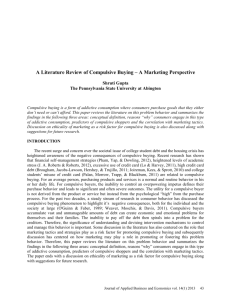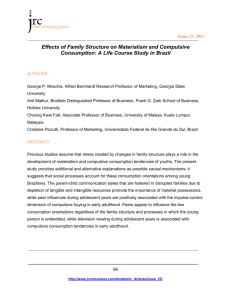Compulsive Disorder in Cats and Dogs
advertisement
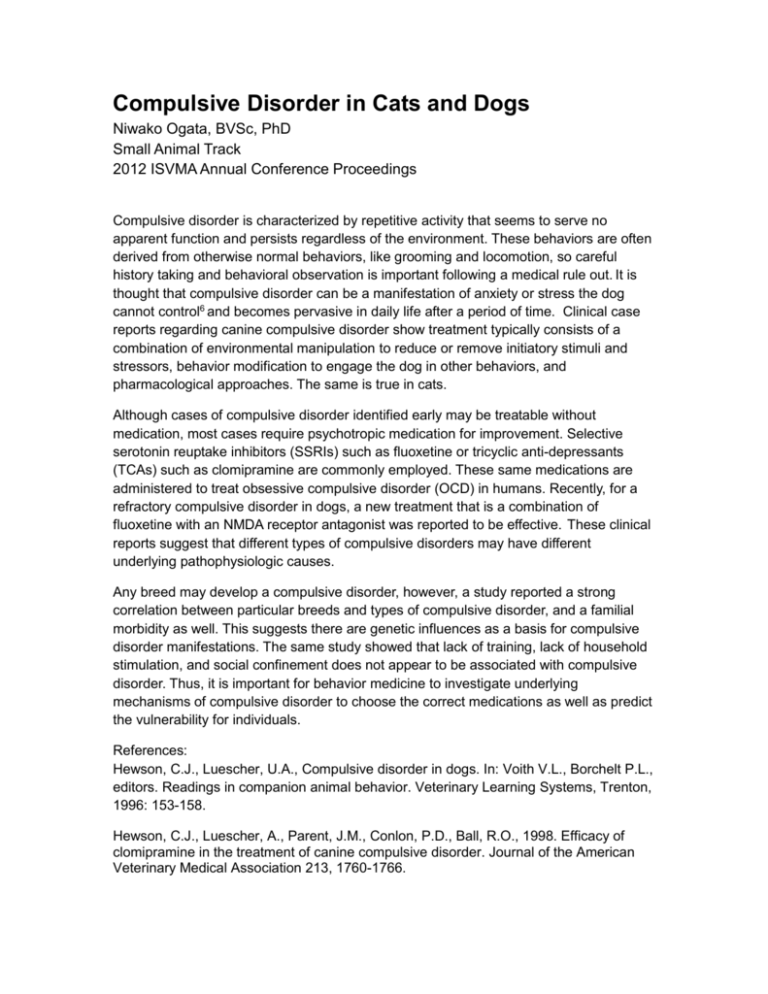
Compulsive Disorder in Cats and Dogs Niwako Ogata, BVSc, PhD Small Animal Track 2012 ISVMA Annual Conference Proceedings Compulsive disorder is characterized by repetitive activity that seems to serve no apparent function and persists regardless of the environment. These behaviors are often derived from otherwise normal behaviors, like grooming and locomotion, so careful history taking and behavioral observation is important following a medical rule out. It is thought that compulsive disorder can be a manifestation of anxiety or stress the dog cannot control6 and becomes pervasive in daily life after a period of time. Clinical case reports regarding canine compulsive disorder show treatment typically consists of a combination of environmental manipulation to reduce or remove initiatory stimuli and stressors, behavior modification to engage the dog in other behaviors, and pharmacological approaches. The same is true in cats. Although cases of compulsive disorder identified early may be treatable without medication, most cases require psychotropic medication for improvement. Selective serotonin reuptake inhibitors (SSRIs) such as fluoxetine or tricyclic anti-depressants (TCAs) such as clomipramine are commonly employed. These same medications are administered to treat obsessive compulsive disorder (OCD) in humans. Recently, for a refractory compulsive disorder in dogs, a new treatment that is a combination of fluoxetine with an NMDA receptor antagonist was reported to be effective. These clinical reports suggest that different types of compulsive disorders may have different underlying pathophysiologic causes. Any breed may develop a compulsive disorder, however, a study reported a strong correlation between particular breeds and types of compulsive disorder, and a familial morbidity as well. This suggests there are genetic influences as a basis for compulsive disorder manifestations. The same study showed that lack of training, lack of household stimulation, and social confinement does not appear to be associated with compulsive disorder. Thus, it is important for behavior medicine to investigate underlying mechanisms of compulsive disorder to choose the correct medications as well as predict the vulnerability for individuals. References: Hewson, C.J., Luescher, U.A., Compulsive disorder in dogs. In: Voith V.L., Borchelt P.L., editors. Readings in companion animal behavior. Veterinary Learning Systems, Trenton, 1996: 153-158. Hewson, C.J., Luescher, A., Parent, J.M., Conlon, P.D., Ball, R.O., 1998. Efficacy of clomipramine in the treatment of canine compulsive disorder. Journal of the American Veterinary Medical Association 213, 1760-1766. Maurer, B.M., Dodman, N.H., 2007. Animal behavior case of the month. Journal of the American Veterinary Medical Association 231, 536-539. Moon-Fanelli, A.A., Dodman, N.H., 1998. Description and development of compulsive tail chasing in terriers and response to clomipramine treatment. Journal of the American Veterinary Medical Association 212, 1252-1257. Overall, K.L., Fears, anxieties and stereptypies. In: Clinical behavioral medicine for small animals. Mosby, St. Louis, 1997: 209-250. Overall, K.L., Dunham, A.E., 2002. Clinical features and outcome in dogs and cats with obsessive-compulsive disorder: 126 cases (1989-2000). Journal of the American Veterinary Medical Association 221, 1445-1452. Seksel, K., Lindeman, M.J., 2001. Use of clomipramine in treatment of obsessivecompulsive disorder, separation anxiety and noise phobia in dogs: a preliminary, clinical study. Australian Veterinary Journal 79, 252-256.
